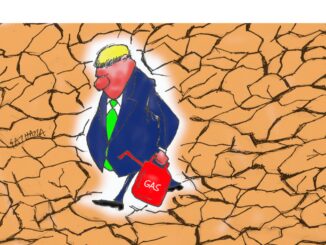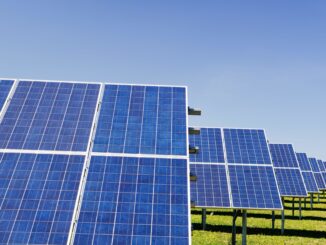
Europe’s ambitious pursuit of net-zero emissions by 2050 was once hailed as a bold step toward a sustainable future. However, as the continent grapples with skyrocketing energy prices, industrial decline, and heightened geopolitical vulnerabilities, it’s becoming clear that these policies have come at a steep cost. By prioritizing rapid decarbonization over energy security, Europe has dismantled reliable power sources, increased dependency on foreign imports, and alienated key suppliers.
Are you from California or New York and need a tax break?
This article explores how net-zero initiatives have undermined Europe’s energy independence, drawing on recent developments in Germany, France, and broader import dynamics, while highlighting potential ripple effects in the United States.
Germany’s Deindustrialization: A Cautionary Tale
Germany, once Europe’s industrial powerhouse, is now facing deindustrialization largely due to its aggressive energy transition, known as the Energiewende. The decision to phase out nuclear power—finalized with the shutdown of the last three reactors in April 2023—has been a critical misstep.
This move, rooted in post-Fukushima anti-nuclear sentiment, eliminated a carbon-free energy source that previously supplied about 20% of the country’s electricity.
Instead, Germany doubled down on intermittent renewables like wind and solar, which require massive subsidies and backup from fossil fuels.
Compounding this, the cutoff of cheap Russian natural gas following the 2022 Ukraine invasion has driven energy costs through the roof. Russia’s share of EU pipeline gas imports plummeted from over 40% in 2021 to just 11% in 2024.
German industries, particularly energy-intensive sectors like chemicals and manufacturing, have suffered. Factories are closing or relocating abroad, with some moving to China, where energy is cheaper and less regulated.
For instance, the Energiewende’s focus on renewables has led to higher electricity prices and supply instability, exacerbating economic slumps.
Critics argue that maintaining nuclear and Russian gas could have mitigated this, but net-zero ideology prevailed, leaving Germany vulnerable despite being Europe’s top renewable power producer.
France’s Nuclear Fleet: Neglect and Outages
France, long reliant on nuclear power for about 70% of its electricity, has also faltered under net-zero pressures. Maintenance issues have plagued its aging fleet, leading to widespread outages and reduced output. In 2022-2023, stress corrosion cracks affected multiple reactors, forcing inspections and repairs on 12 units, which were completed by January 2024.
This crisis stemmed from deferred maintenance and an overloaded schedule, exacerbated by the push for renewables and EU-wide decarbonization targets. Although nuclear generation rebounded from 320 TWh in 2023 to 361 TWh in 2024, ongoing challenges persist.
New reactor builds, like the EPR2 at Penly, face delays—now expected online in 2038 instead of 2035.
France’s pro-nuclear stance clashes with EU renewable targets, and the focus on green transitions has diverted resources from maintaining its nuclear advantage.
As a result, France has exported less power to neighbors, straining Europe’s grid and highlighting how net-zero policies can undermine even strong nuclear programs.
Europe’s Import Dependency: Hinging on Global Powers
With Russian supplies curtailed, Europe has pivoted to imports from the US, Qatar, and others, but this shift has created new vulnerabilities. The US now supplies 55% of EU LNG and 17% of oil imports, underpinned by a $750 billion trade deal committing the EU to massive purchases.
Qatar provides 12-14% of Europe’s LNG, ramping up since 2022.
However, Europe’s net-zero regulations are provoking backlash from these suppliers. Qatar has threatened to halt LNG exports over the EU’s Corporate Sustainability Due Diligence Directive (CSDDD), which mandates climate transition plans and could impose fines up to 5% of global turnover.
In a May 2025 letter, Qatari Energy Minister Saad al-Kaabi warned of redirecting supplies elsewhere, citing infringement on national sovereignty.
This could devastate countries like Italy (45% of LNG from Qatar) and Germany, already reeling from energy shortages.
Moreover, Europe’s renewable push relies heavily on China, which supplies 98% of solar panels and dominates critical minerals.
This dependency risks deindustrialization in Europe’s own solar sector due to cheap imports, while global competition for LNG drives up prices.
The EU aims to end all Russian gas by 2027, but without alternatives, energy security hangs in the balance.
The US Angle: Echoes of Europe’s Mistakes?
The United States, under the Biden administration, has pursued net zero through the Inflation Reduction Act (IRA), aiming for 61-66% emissions cuts by 2035.
While the IRA invests heavily in clean energy—$40 billion in loans for projects—the US oil and gas sector has paradoxically boomed, with record production despite climate pledges.
However, policies like methane emissions regulations mirror EU rules, potentially burdening companies with costs and complexity.
US firms, supplying over 50% of EU LNG, have warned of boycotts if net-zero mandates extend too far.
This could parallel Europe’s supplier backlash, impacting American jobs and exports. As Europe deindustrializes, the US risks similar pitfalls if it prioritizes ideology over energy pragmatism.
The Bottom Line -Rethinking Net Zero
Europe’s net-zero drive has sacrificed energy reliability for unattainable ideals, leading to deindustrialization, import dependencies, and supplier revolts. Germany’s nuclear folly, France’s maintenance lapses, and threats from Qatar underscore the perils. If the US follows suit, global energy markets could face further disruption. It’s time for policymakers to balance climate goals with realistic energy strategies—before the lights go out for good.
Over the next twenty-five days, the United States will undergo the EPA’s review process to repeal the Obama-era classification of CO2 as a pollutant. Once this is complete, you will see further bifurcation of countries into new trading blocs. Those that are doomed to deindustrialization following Net-Zero policies and those not following Net-Zero and implementing energy security based upon putting in energy that can be implemented without subsidies, and as President Trump’s team has been saying, “Energy should be profitable, and we will only implement sources of energy that do not need subsidies”.
Energy security starts at home, and we are entering a challenging time where people will face tough decisions.
Is Oil & Gas Right for Your Portfolio?
Crude Oil, LNG, Jet Fuel price quote
ENB Top News
ENB
Energy Dashboard
ENB Podcast
ENB Substack






